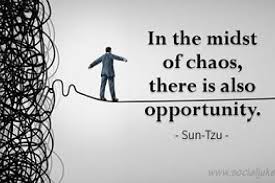The amount of confusion and disorder around communications is just growing by the second in the real world. Conservative numbers say we waste over 30% of our effort just dealing with communication issues. Aggressive numbers say that 60% of work is about the work, not the work itself. Much of this work about work is communications. Chaotic communications are a massive drag on productivity. It only gets compounded in organizations changing to meet their changing customer needs and demands for better services and products—all of this while having to produce bigger and better outcomes often measured in profitability. Let’s explore the problems that we all have with chaotic communications and what are the best coping mechanisms going forward.
Dealing with Noise
Communications
We get so many communications
simultaneously that it is overbearing. Sure we can make rules to put unique
touches in our respective spam files/folders, but the influx of contacts is
just overwhelming. We need to turn down the noise level by prioritizing
communications. Often the coping mechanism is political and topic-based.
Unfortunately, this is barely a minimum.
Most roles have multiple and
many reporting responsibilities, both solid and dotted lines. Many times people
are playing various roles, thus adding another dimension to deal with daily.
Sometimes the role is a crucial contributor, and sometimes the role is a
manager who is responsible for the contribution of others. Each role over time
requires a shifting set of emerging priorities which changes which
communications are the most important at any given moment.
Keeping Pace with Expected
Results.
Because there are so many
communications and roles to associate them with, it is hard to keep pace with
efforts. Everyone expects all players "to be up on the latest
developments", so we find ourselves scrambling to be pertinent to actions
and their highly desired results. Speed is increasing, not decreasing, so this
is a tiring effort filled with stress.
I'm sure we all can
identify with these problems and more, but the big question is, "What are
we going to do about it?" We can do several things besides getting
"Sick of Slack" and getting "Tired of Teams." So here are
some coping mechanisms.
Simplifying Communications
Instead of showing people how
much we know or how important we are by droning on with detail, try summarizing
and netting things out. It needs to be done carefully not to offend others but
still speed up the communication process. It means that we each become
"good citizens of communications".
Let others ask for the detail.
Linking Communications to
Results
The very best way to
prioritize communications is to link them to desired results. If the touches
don't deliver results, they become noise and should be set aside or ignored. It
requires a simple discipline of prioritizing results and link only essential
documents to them. It will require a new
kind of tool that focuses on results, not just to speed up noise communications
that we often see in modern collaboration tools.
Proactively Leveraging
Shared Content
Often we have to scramble to
find all the communications associated with the following activity about to hit
us. Imagine all the content saved on a
shared repository organized by results. It will cut the preparation time
and link all the key participants to the latest content. Care must be taken not
to collect too much stuff and name the content in obvious ways. The best
content will float to the top by results pulling content there.
Net; Net:
It's time to focus on the
organizational drag that chaotic communications are costing organizations
dearly. The digital overload is real and climbing. There continues to be a
significant increase in digital meetings, chats, emails, and document reviews.
The preparation time it takes to be up to date to contribute is overwhelming
and is often done in a reactive mode. Something has to change and will when
communications are tied to results. The significant results and their focused activities
must be supported by shared and up to the second content in various forms and
formats. It’s time to turn chaos to order. It will put passion back into hybrid
work and take the struggle out of communications.
Additional Reading:
Results-OrientedCommunications Post

Thank you for this insight, Jim!
ReplyDeleteThis comment has been removed by a blog administrator.
ReplyDelete